Green and leafy, the potato plant blooms purple toward the end of summer. But it’s the tubers it grows underneath, away from prying eyes, that are its real treasures.
The cultivation of the potato plant began over 8,000 years ago with the Pre-Incas of Peru. But it wasn’t until the 16th century that potatoes made their way to Europe and then the rest of the world.
Since then, they’ve been an almost indispensable crop. Learn more about the potato plant and how to grow and care for it.
Types of Potatoes
Different types of potatoes don’t just taste differently but have different growth periods. Also, some varieties store better than others.
There are hundreds of potato varieties out there including yellow, white, russet, red, purple, petite, and fingerling.
Based on when they grow, potato plants are further divided into three categories:
- First Earlies – You can harvest these in early June.
- Second Earlies – Also known as new potatoes, they grow in late June.
- Maincrop – Ready in July to September, these potatoes store well and make for good winter provisions.
So far so good. Now let’s look at some of the best types of potatoes you can grow.
Yukon Gold
Digging this popular variety out of the ground at the end of the harvest season feels almost like digging nuggets of gold.
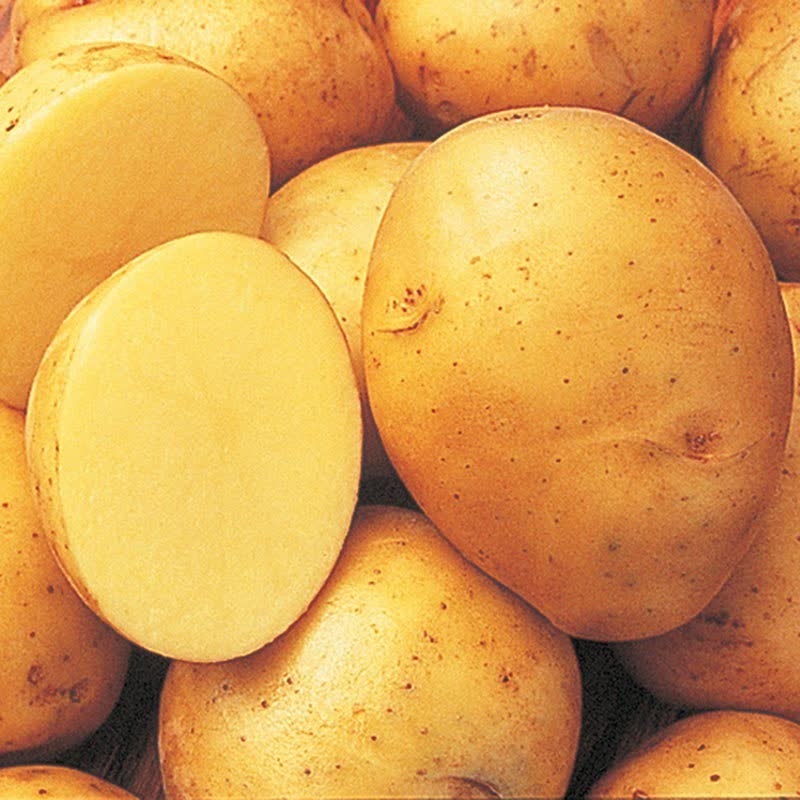
A hybrid variety, Yukon Gold first appeared in Canada in the second half of the 20th century.
Now it’s one of the best-known early potato plant varieties, growing in as little as 70 days. It’s a delicious treat whether you boil, mash, or roast it.
Kennebec
Looking for a potato fit for all occasions? Kennebec is a popular, high-yield potato plant variety that produces creamy spuds with a thin skin.
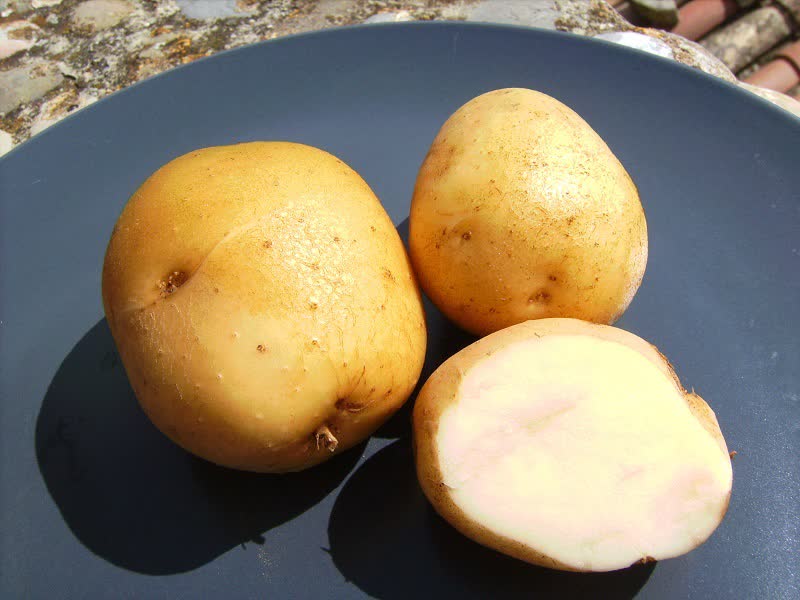
You can fry, mash, or use it for soups, stews, or salads with delicious results. An early maincrop, it’s disease resistant and stores well.
Kennebec is a very dependable variety that’s great if you’re just getting started growing potatoes.
Red Bliss Potatoes
The firm, slightly bitter Red Bliss potato is easy to distinguish thanks to its red skin. The flesh is white and creamy.
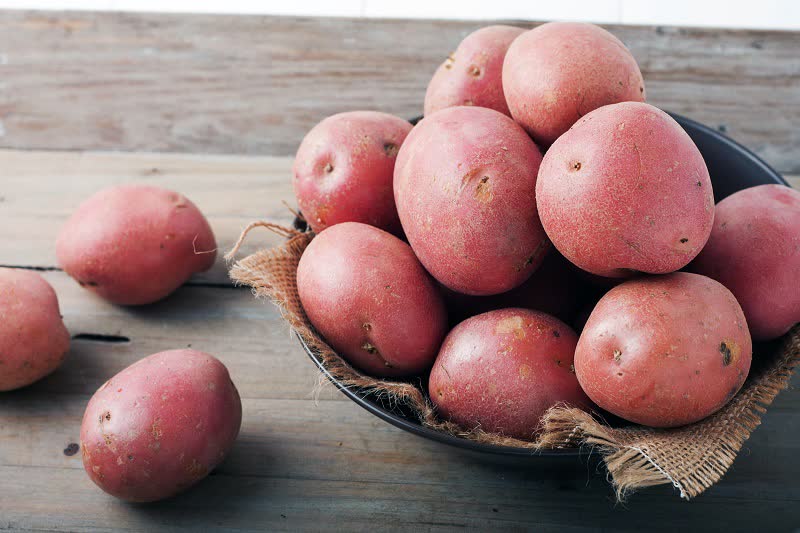
Choose this potato plant if you like to boil or roast potatoes but not for mashing.
Carola
For a classic potato flavor, opt for this potato plant. The oblong Carola potatoes have yellow skin and flesh and a firm texture. They taste best when roasted, grilled, fried, or boiled.
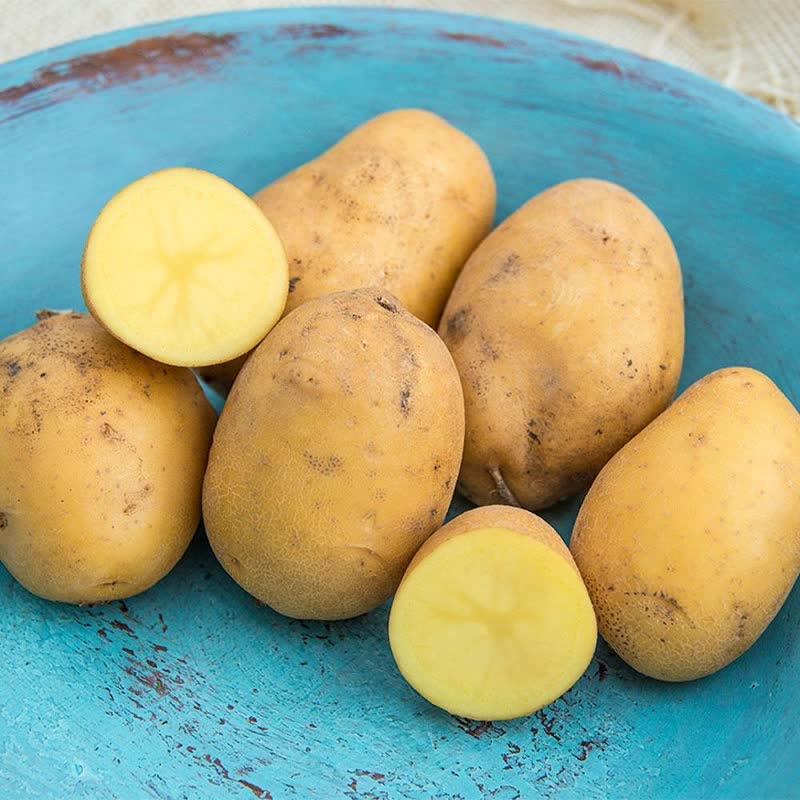
Katahdin
If you like having French fries on your menu, Katahdin potatoes are just for you. This smooth and soft potato with yellow flesh is great for boiling, too.
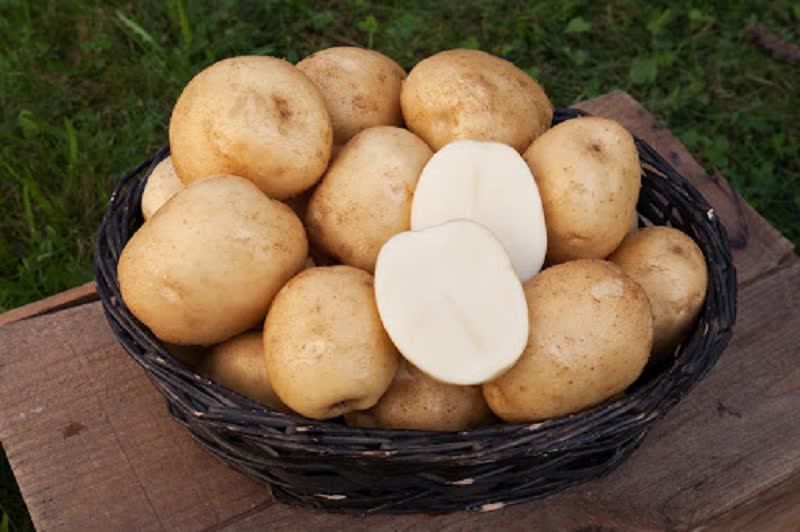
Irish Cobbler
This potato plant grows early in the season. Irish Cobble potatoes are delicious and filling. Try them mashed or fried with some freshly grown garlic and herbs.
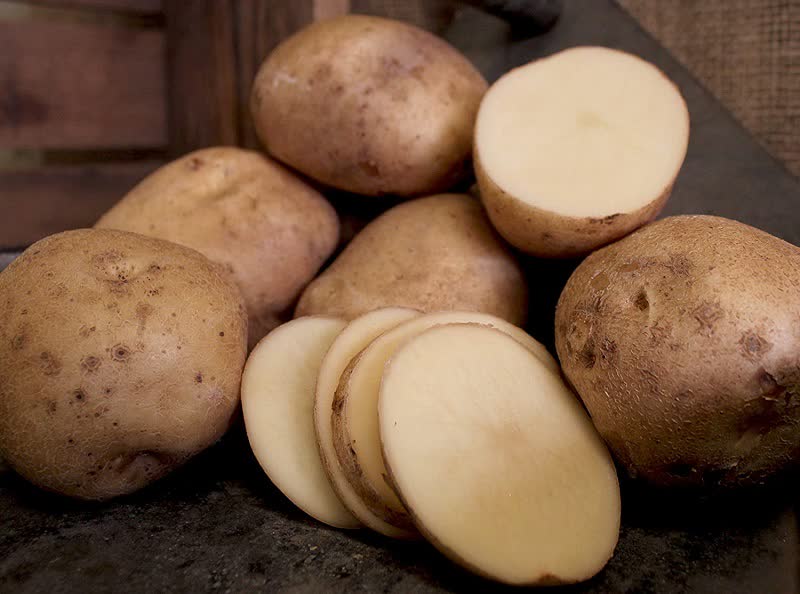
All Blue
The bluish color of its skin gives this potato plant its name. One of the best reasons to grow it is because All Blue potatoes keep very well.
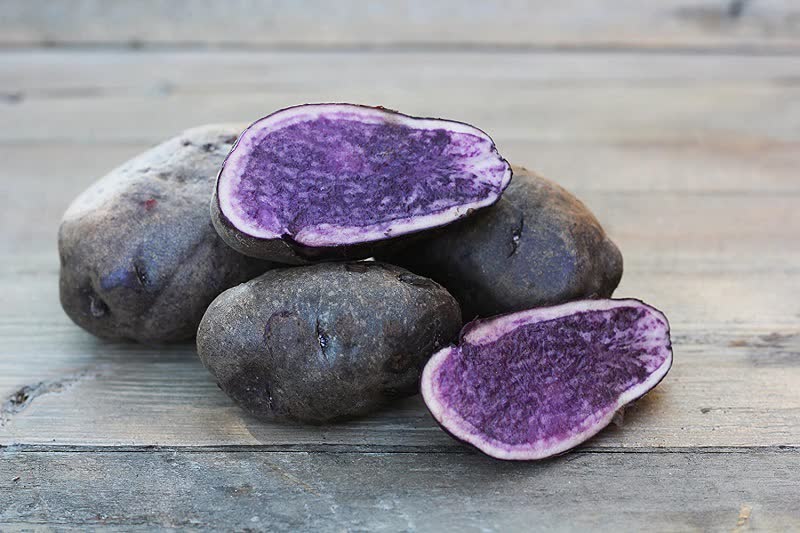
Princess Laratte Potato
The sweet, nutty flavor of this white variety makes it a choice potato for more sophisticated dishes. It’s especially popular in France.
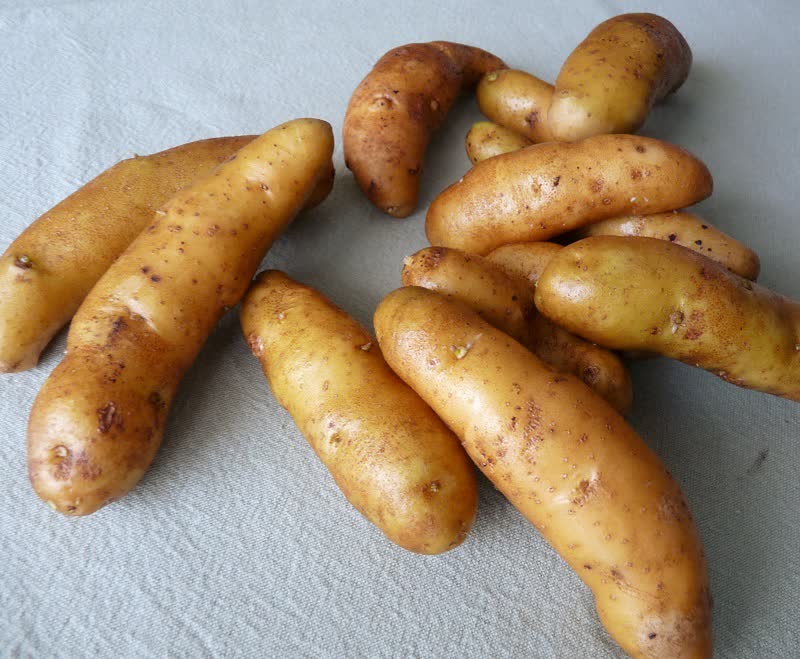
But bear in mind that this potato plant grows more slowly than other entries on this list. You’ll have to wait for it up to 110 days.
French Fingerling
Long and slender, French Fingerling potatoes are easy to prepare. They are perfect if you like to enjoy potatoes without the trouble of peeling and cutting them.
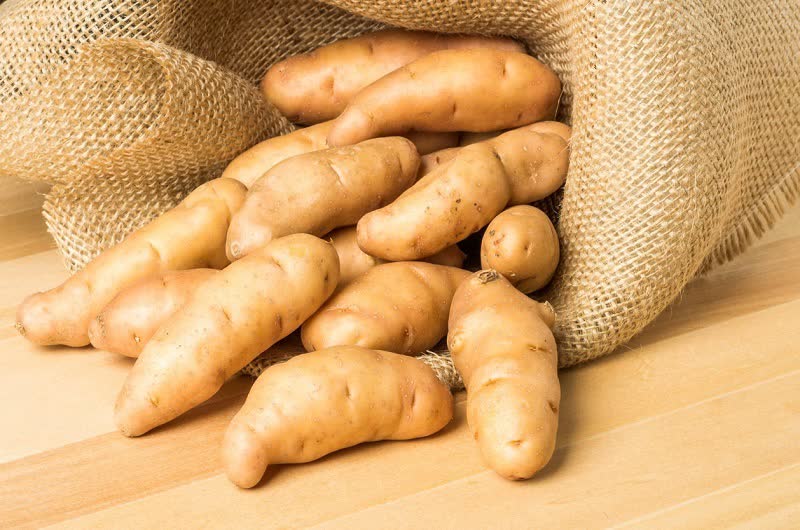
Rio Grande
This potato plant has a lot going for it—high yield, fast growth, and a healthy dose of antioxidants. Compared to other varieties, Rio Grande Russet contains less starch, making it just great for fresh salads.
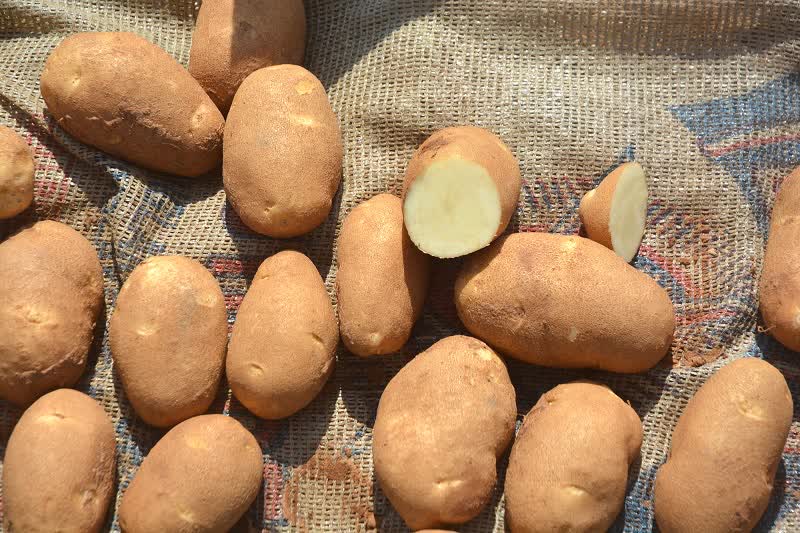
You can harvest this potato variety in just 60 days. So, if you’re looking for a tasty fast grower, you may want to give it a try.
Tip: The skins have a nice flavor so if you grow this potato plant organically, you may want to leave them on when boiling the potatoes.
Purple Majesty
Not your average potato plant, purple majesty has succulent purple flesh and skin the color of plums. It’s sweeter than most pale or golden varieties.
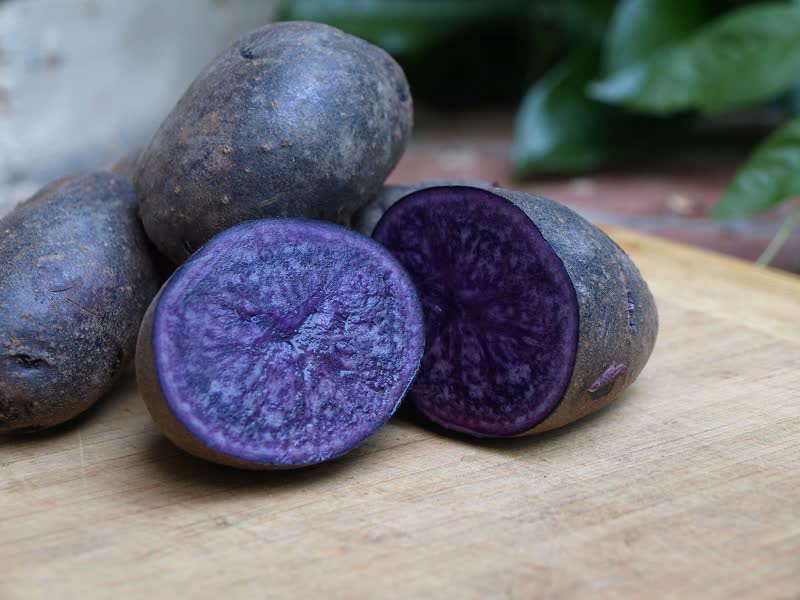
If you give it full sun and water it regularly, you can grow it in around 90 days. That makes it a mid-term grower.
Tip: To enjoy its taste to the full, fry it.
Magic Molly
At first glance, Magic Molly doesn’t look much like a potato. But don’t let its deep purple hues deceive you. You’re looking at one of the most interesting potato plants around.
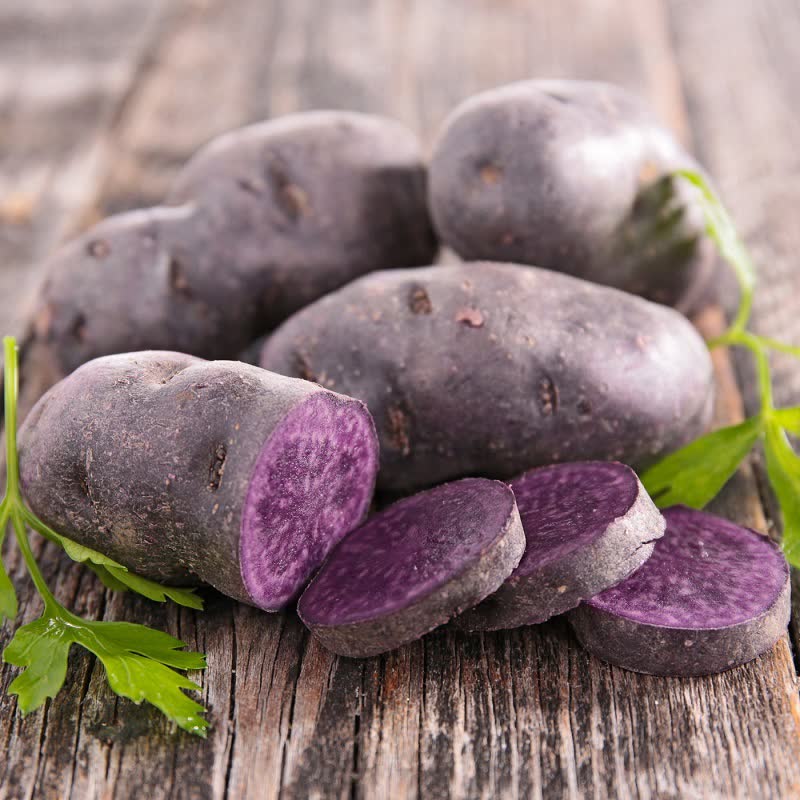
Whether you grill or boil it, this type of potato will keep its color and look just great on your plate. Magic Molly is perfect for surprising friends or family—most of them will have no idea what it is until they taste it!
Tip: Let Magic Molly grow for around 100 days. Avoid digging it out of the ground prematurely.
What about sweet potatoes, you may ask? Sweet potatoes are a root, not a tuber, and don’t grow like regular potatoes. Don’t mix them up!
How to Grow Potatoes
Potatoes are surprisingly easy to grow. The potato plant is not very demanding, which accounts for its widespread cultivation.
You can grow potatoes from seed potatoes. If you have a few potatoes that have sprouted, you can use them to grow an entire crop.
Important: Growing the potatoes from seed potatoes bought at the grocery store can lead to uncertain results. These potatoes may have been treated with a growth inhibitor that prevents their sprouting.
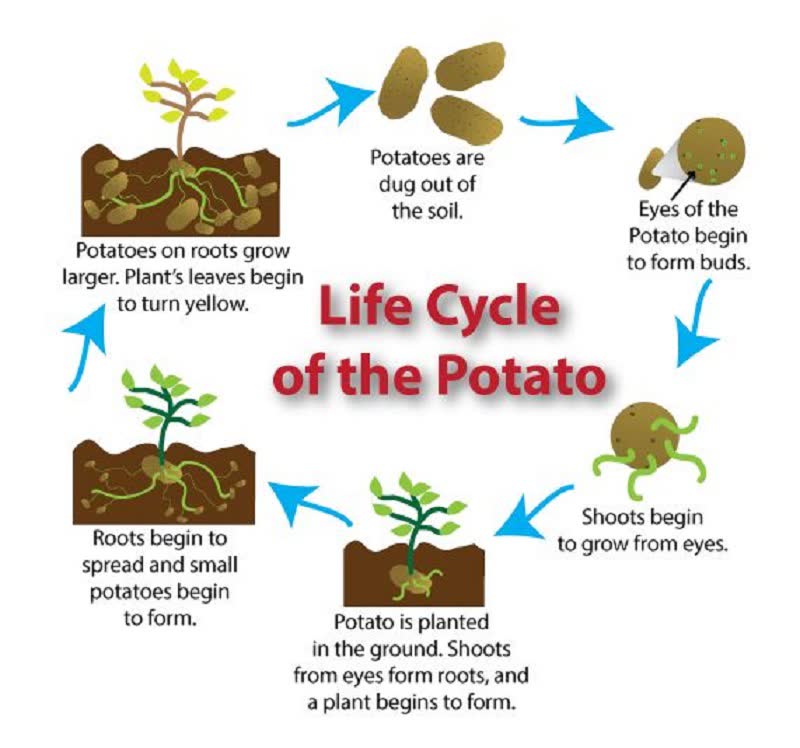
You can grow potatoes from seed too. With this method, you have to sow the seeds indoors and transplant the young plants to the garden.
Whether you choose to grow the potato plant from seed potatoes or potato seeds—mind the distinction!—here’s what you need to know.
Light
Potatoes like full sun but they can handle some partial shade, too. Keep in mind that it’s the leaves at the top of the potato plant that soak up the sun, not the tubers!
Soil for the potato plant
Loose, loamy soil with a 5-6 pH level is ideal for most types of potatoes. Avoid planting your potatoes in rich soil!
how to Water potato plants
The potato plant is sensitive to drought, so make sure to water it regularly. Give it around 1” of water every week during its growth season.
Temperature
The soil will tell you when to plant potatoes better than the calendar. Soil temperature should be at least 50°F (10°C).
Fertilizer
Use a slow-release organic fertilizer in diluted form every few weeks. That way you can ensure your potato plant has all the nutrients it needs to thrive.
Potato Plant Diseases
Potatoes are prone to pests and diseases. Reduce risks by rotating where you plant potatoes every year. Also, you can add peat to increase the pH level of the soil.
Potato Sprouts
You can plant sprouted potatoes in the garden and grow a new crop from them. It’s better than throwing them away, especially if you don’t have potato seeds at hand.
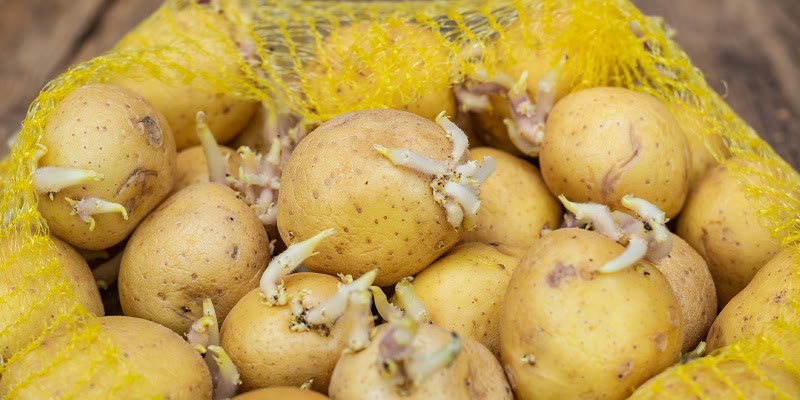
- You can sprout seed potatoes 6 weeks ahead of planting. Lay the potatoes in egg cartons and place them with the eyes up.
- Keep them in a cool and bright place like your garage or pantry.
- Cut large sprouted potatoes into smaller parts. Ensure that each piece has at least two white sprouts.
- Let each cut piece to dry for a day before planting.
- Start potatoes two weeks after the last spring frost. In this way, the wet soil will not ruin your crop.
Warning: Sprouted potatoes contain higher concentrations of chaconine and solanine, which are toxic when eaten to excess. Symptoms may include abdominal pain, vomiting, and diarrhea.
How to Plant Potatoes
How soon you can plant potatoes depends on where you live. In Southern regions, you can plant potatoes between September and February and grow them as a winter crop.
In Northern regions, on the other hand, you can plant them no sooner than early to mid-April.
Important: Plant potatoes larger than a hen’s egg whole regardless of the number of sprouts they have.
- Choose a spot for your potato plant crop where it gets at least 6 hours of full sun daily.
- Plant in loose, well-drained soil. Avoid planting potatoes near tomatoes, peppers, or strawberries.
- Plant potatoes in evenly spaced rows with the growing stem up. Leave at least 3 feet between the rows.
- Dig an 8” trench with a tapering bottom.
- Mix the earth at the bottom of the trench with organic compost or rotted manure.
- Place a seed potato piece in each trench every 14” and cover with a few inches of soil.
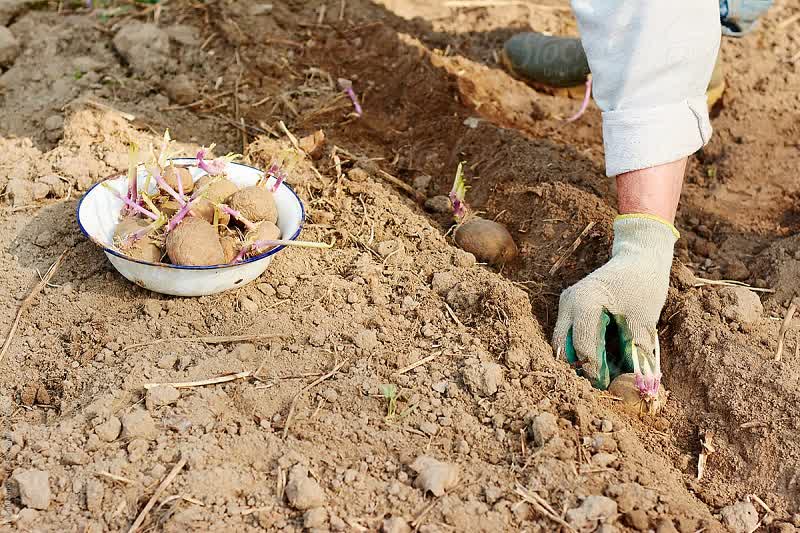
Growing of Potatoes – Doing It Right
Around 2 weeks after planting, sprouts should appear. Fill in the rest of the trench with soil but leave part of the plant exposed.
Here are some potato plant growing tips to keep in mind.
- Add mulch to the potato plants to preserve moisture.
- Use a fertilizer that contains nitrogen and potassium to increase the fertility of the plant.
- Water the plant well, giving it progressively more water as it grows. But be careful that the soil does not become wet as that may cause the tubers to rot.
- Hill the potato plants up to four times during the growth season. For this, draw the soil around the shoots. Hilling increases harvest and protects the tubers from light, which makes them turn green and produce toxic compounds that alter their taste.
- Harvest your potatoes with a fork once the plants begin to flower.
- Let the potatoes dry in the air for a few hours.
Growing Potatoes from Seed
To grow potatoes from seed, you need good seeds. Harvesting your seeds from last year’s crop can yield inconsistent results. So, it’s best to use hybrid seeds from experienced breeders. To grow the seeds faster, check out aeroponics.
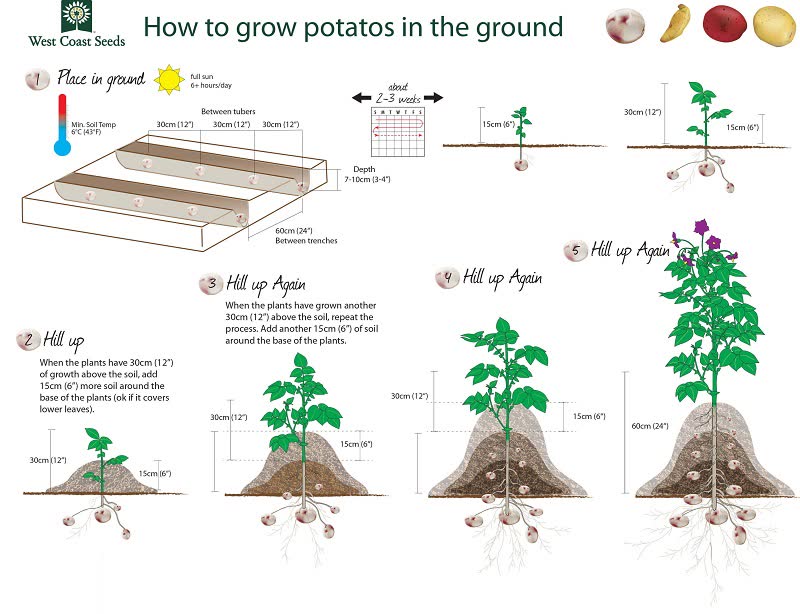
- Sow the potato plant seeds in shallow plug trays or pots six weeks before the last frost. For best results, choose a nutrient-free soil mix.
- Keep the plug trays or pots exposed to the sun or artificial light for at least 12 hours every day. The ideal temperature for the seedlings is around 70°F (21°C).
- After the seeds germinate, apply liquid fertilizer for seedlings and move to a cooler room.
- Transplant the plants to the garden once they are 2” tall.
- Plant the young potato plant in a trench or hill in rows.
- Space the plants between 8-12” depending on whether you want to harvest small or large potatoes. Allow for at least 8” between rows and thrice as much if you want to grow large potatoes.
- Ensure that only the top leaves are above the surface of the soil.
- As your potato plant grows, treat it the same as when growing it grown from seed potatoes.
- Use the hilling method once the plant reaches 4-6” and harvest after 70-120 days.
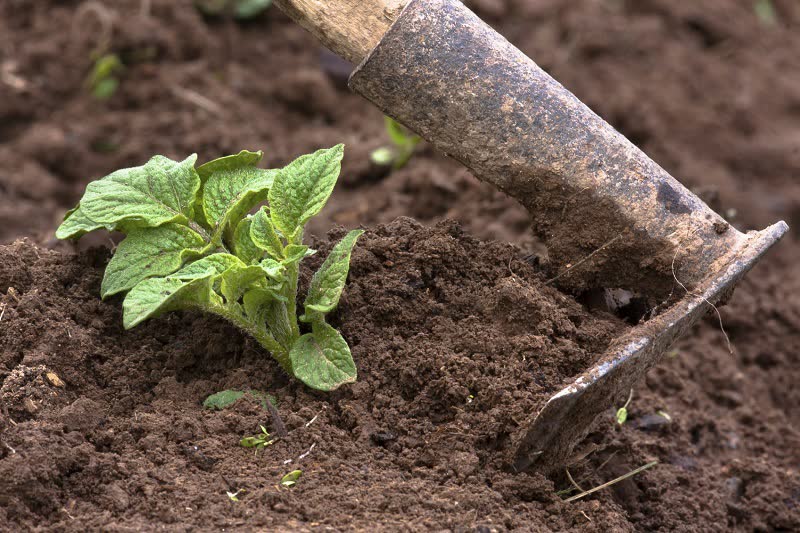
How to Grow Potatoes in Bags
Growing potatoes in trenches requires quite a bit of space. It also gets a bit more complicated if you have rocky soil.
But you can always grow potatoes in bags to save space and labor. Growing potatoes in bags involves the same gradual layering of soil over the potato plant to encourage it to grow more roots and produce more studs.
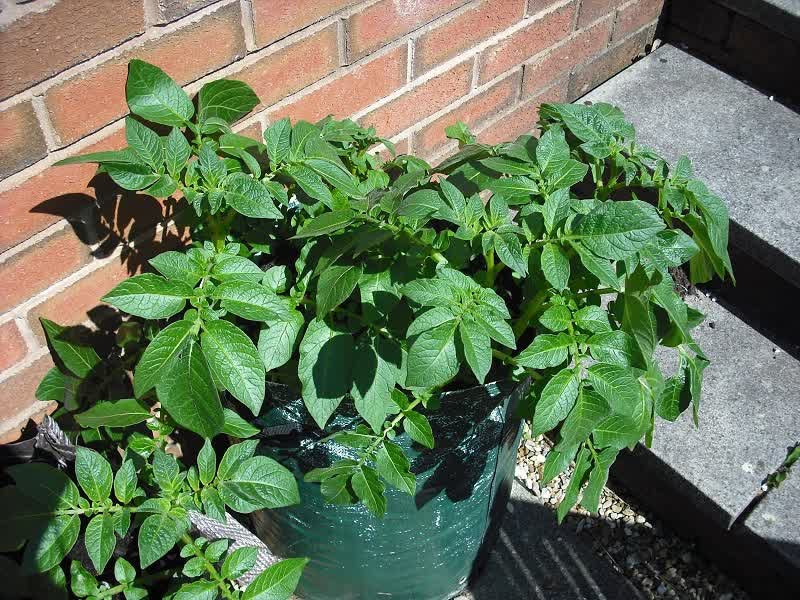
Growing potatoes in a bag can increase your harvest while also help you grow tastier potatoes.
What You’ll Need
- Burlap potato grow bag or cardboard box – the easiest way to make a potato grow bag is to roll down the top of an old burlap sack
- Soil and compost mix
- Seed potatoes, whole or cut according to the instructions below
Step by Step Instructions
- Fill the bottom of your potato grow bag or box with a 2-3” layer of soil and potting mix.
- Plant the seed potatoes carefully into the soil with the sprouts up.
- Cover the tops of the tubers with soil and potting mix.
- Water the grow medium and keep it moist but not wet.
- As the green sprouts grow, cover them with a compost mix.
- Keep the growing tubers covered and add in more soil. If you grow potatoes in a burlap bag, roll up the bag as the level of the soil rises.
- Once the soil reaches the top of the bag or container, let the potato plant flower and then empty the bag and gather the potatoes you’ve grown.
Potato Plant FAQ
Can you grow a potato plant from a potato?
You can grow a potato plant from a seed potato if you plant it in the ground once it puts forth whitish shoots. But often, the best way to grow potatoes is from certified seed.
How long do potatoes take to grow?
Potatoes need 70 to 120 days to grow. It’s best to resist the temptation to harvest them before this point.
What month do u plant potatoes?
Gardeners plant potatoes between March and May and harvest them 4 months later. But if you live in an area with mild winters, you can plant them in the fall or winter.
Do potato plants need full sun?
Potatoes thrive in full sun. While potatoes grow underground, they put forth leafy plants over the ground which soak up the sunlight.
Ready to Grow Some Potatoes?
Digging up potato nuggets out of the soil is rewarding. And unloading them from a potato grow bag can be just as fulfilling.
The best part? You can taste the fruit of your labor and incorporate it into countless dishes.
You don’t have to be a seasoned gardener to grow the potato plant. But if you are, that’s all the better for you. Either way, add this bountiful plant to your garden—you won’t regret it!

Leave a Reply